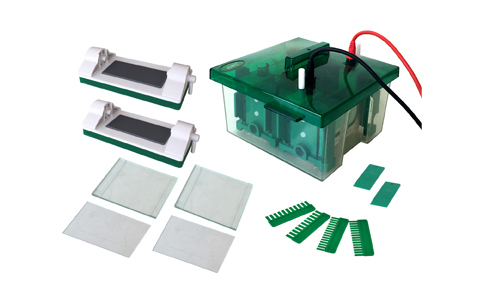The Mini-Protean Vertical Electrophoresis Cell YR03427 by Kalstein is a cutting-edge electrophoresis system designed to provide efficient separation of proteins for a wide range of laboratory applications. This product offers a robust, user-friendly design, ensuring high-performance results while maintaining ease of use. Its compact size and efficient modular system make it a preferred choice among scientists who require precision and reliability in their electrophoresis experiments.
On the other hand, the Mini-PROTEAN Tetra Cell from Bio-Rad is another popular choice in the electrophoresis market. Known for its durable design and versatility, the Tetra Cell enables simultaneous running of multiple gel cassettes, offering increased throughput for high-demand laboratory settings. With a reputation for consistent results, this system is favored by research institutions looking for dependable performance in proteomics and genomics.
| Feature | Kalstein Mini-Protean YR03427 | Bio-Rad Mini-PROTEAN Tetra Cell |
|---|---|---|
| Capacity | Up to 4 mini-gels | 1-4 gels simultaneously |
| User Interface | User-friendly, high precision | Simple, straightforward interface |
| Durability | Robust and stable | Highly durable |
| Size | Compact | Moderate |
| Price | Competitive pricing | Moderately priced |
How They Work
Both systems operate on the principle of electrophoresis, utilizing an electric field to drive protein separation through a gel matrix. The Kalstein Mini-Protean YR03427 features a vertical design that enhances gel distribution and resolution, ideal for high-precision experiments. Meanwhile, Bio-Rad’s Tetra Cell provides the option of running multiple gels simultaneously, increasing throughput for high-volume laboratories.
Applications
The Kalstein YR03427 and Bio-Rad Tetra Cell are essential for various laboratory applications including protein analysis, nucleic acid separation, and molecular biology research. The ability to precisely separate biomolecules allows these systems to be indispensable in research endeavors focused on understanding complex biological questions.
Types
The products discussed here are mini-gel systems, designed specifically to handle small to medium-sized samples efficiently. While both offer vertical electrophoresis configurations, they cater to different laboratory scales and needs, from Kalstein’s compact, precise applications to Bio-Rad’s versatile, high-throughput solutions.
Market Pricing
Electrophoresis cells such as the Kalstein YR03427 and Bio-Rad Tetra typically range in price based on capability, brand, and additional features. The Kalstein model is noted for its competitive pricing, offering advanced features at a price point accessible for most research labs. Bio-Rad offers moderate pricing consistent with its robust design and reputation.
Frequently Asked Questions
What is the main difference between these two electrophoresis systems?
The primary distinction lies in their throughput and design; Kalstein’s model focuses on precision with a compact build, whereas Bio-Rad’s offers increased throughput with its ability to run multiple gels.
Which system is more cost-effective?
The Kalstein YR03427 is generally more cost-effective given its competitive pricing and advanced features, making high-quality electrophoresis accessible with minimal investment.
Advantages and Disadvantages
Kalstein YR03427 Advantages: Offers high precision, compact design, user-friendly interface, and competitive pricing. Disadvantages: May not accommodate as many simultaneous samples as larger systems.
Bio-Rad Tetra Cell Advantages: High throughput capability, durable build. Disadvantages: Higher price point, potentially more complex setup for newer users.
Field Application
In real-world applications, these electrophoresis systems are pivotal in academic and industrial research settings. Kalstein’s system, with its precision and compact design, excels in laboratories where space is at a premium and detail matters. Bio-Rad’s Tetra Cell is often found in larger research facilities where the focus is on processing multiple samples quickly and efficiently.
Recommendations
For maximizing the use of your electrophoresis cell, consider regular maintenance checks to ensure consistent performance. Proper gel preparation and thorough cleaning after runs will extend the lifespan of your equipment. Implementing a routine schedule for servicing can prevent common issues and sustain optimal function.
Looking to make a smart investment in your lab’s electrophoresis capability? We invite you to visit Kalstein and explore the Mini-Protean Vertical Electrophoresis Cell YR03427. With Kalstein Plus, you can request or generate a quote automatically, ensuring a streamlined purchasing experience.
If you are seeking a blend of innovation and quality, you’ve come to the right place. At Kalstein, we offer you the luxury of exploring our exclusive catalog of laboratory equipment. We manufacture each piece with a level of excellence. Our intuitive and agile online purchasing channels are designed for your convenience, ensuring the friendliest prices. Don’t hesitate any longer, we bring science to life, it’s time to become part of our community. https://kalstein.us/product/mini-protean-vertical-electrophoresis-cell-yr03427/.

